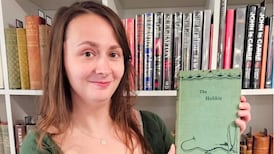GARDENING: LUCY TRENCHreviews
The Founding Gardeners: How the Revolutionary Garden Created an American Eden
By Andrea Wulf William Heinemann, 372pp. £20
WHEN MICHELLE OBAMA dug up a lawn of the White House to establish a vegetable garden she was, perhaps unwittingly, following in the footsteps of the Founding Fathers. Gardening, as all greenies know, is a political act. The first lady tackles present-day concerns about obesity, healthy eating and food sourcing. The first four presidents of the United States believed that gardening, agriculture and the natural landscape would define the identity of their new country.
This fascinating book describes a prelapsarian age in which politicians were not just policy wonks, spouting theory and statistics, but real people with roots in the soil. George Washington, John Adams, Thomas Jefferson and John Madison were all obsessive gardeners, desperate to escape tedious political negotiations and return to their woods and flowerbeds.
In the summer of 1776, on the eve of the British invasion, Washington was ordering rhododendrons, mountain laurels and crab apples for Mount Vernon. When the war was over he retired to his garden and laboured alongside his workers like “a common man”. Adams was happy only in “an old swamp . . . digging stumps and Roots”. As ambassador to the Court of St James, in London, he was more interested in dung heaps (“not equal to mine”) than the social round.
In 1786, when Jefferson and Adams were embroiled in difficult trade negotiations with the British government, they took time off for a garden tour. They visited Stowe, with its classical temples amid natural landscaping, and Wooburn, a ferme ornéewhere "spotted cows" grazed alongside vegetable gardens and flowering shrubberies. Stimulated and impressed by the glories of English gardening, they were also pleased to see the contribution made by North American plants.
The relationship with Britain was complicated. There was a lot to learn and a lot to shake off in a visit to the mother country. Stowe was a proclamation of liberty and republican virtue, but it was the work of the enemy. Fortunately, the discovery that English gardens included so many American plants gave Jefferson licence to adapt these theories to the other side of the Atlantic.
In Britain, gardens were the “refuge of a disappointed politician”, a retreat where the defeated could immerse themselves in horticulture or devise coded critiques of the ruling party. In America, they were an Eden where farmer-statesmen could create the world anew. For the founding fathers, this was both a philosophical and a practical challenge. Gardens were to reflect the sturdy republican virtues of the former colonists; they were to develop a distinct American identity through the use of native plants; they were to be research stations in the development of American agriculture.
Like so many of the great figures of the Enlightenment, the founding fathers were deeply knowledgeable about science and technology. They knew their seeds and cuttings, manure and lime, threshing machines and mould boards. They also had an eye for design, and the understanding of political statement that comes with a classical education. All these ideas came together in their own gardens.
At Mount Vernon on the banks of the Potomac River, Washington set out with military efficiency to create a truly American garden. It was orientated to the west, to the “land of Promise”, and planted with native trees and flowering shrubs. Instead of the classical temples of an English garden, there were two outdoor toilets, painted white and swathed in honeysuckle, the “plant of Liberty”. On his estates, however, Washington experimented with non-native plants and seeds. This was partly out of a belief that the nation had to be self-sufficient, but also to reduce the ruinous dependence on tobacco, which depleted the soil and put America in thrall to British merchants.
Washington’s aim was to harness the natural world to man’s needs. Jefferson, on the other hand, embraced the wilderness, saying that “what nature has done for us is sublime beautiful unique”. Monticello sat on a mountain, approached by steep, winding roads through untamed forest. Beyond it were huge, rolling views, and below a vast vegetable terrace in which Jefferson tested out varieties from all over the world.
It was also Jefferson who sent Lewis and Clark on the first overland expedition to the Pacific coast, in 1804-6. This momentous journey revealed the full riches of the American continent: its economic potential and stupendous landscape. America now had no need to model itself on European ideas of nationhood. Instead it had its own identity, one based on nature not culture.
A couple of centuries later, two images come to mind: the vegetable garden in the White House, where Michelle Obama grows food for her family, and artworks by Irish artist John Gerrard showing "farms" in Oklahoma where hundreds of thousands of pigs are reared in unmanned sheds beside a lake of slurry. One America, two futures, both predicated in The Founding Gardeners.
This is a highly enjoyable and thought-provoking book. Wulf combines a sure knowledge of garden history and 18th-century politics with a keen eye for domestic detail and evocative description. By focusing the grand narrative of early America on four individuals, she writes the best kind of popular history. For a reviewer, a test of a good book is whether to keep it or not; another is whether to lend it. Wulfs book is definitely one to keep. But maybe not to lend. Would I ever get it back?
Lucy Trench works at the Victoria and Albert Museum, in London. Her book on the museum was published by V&A Publishing in 2010
Lara Marlowe writes about Michelle Obama in today's Irish Times Magazine











